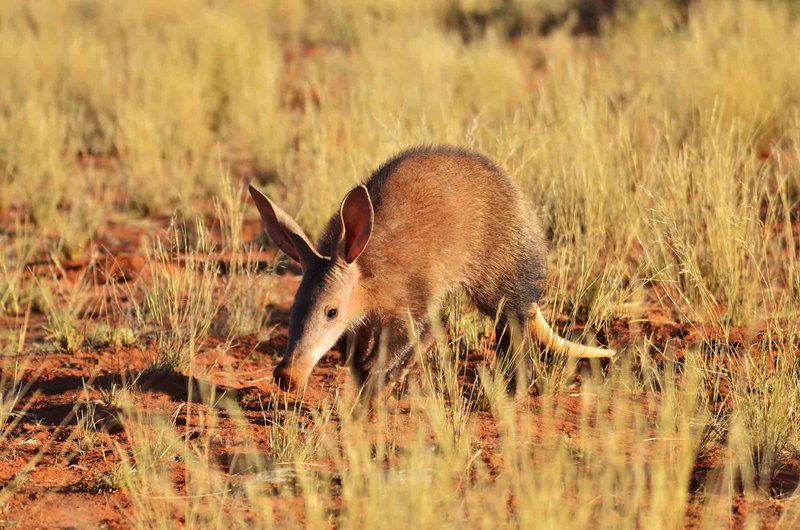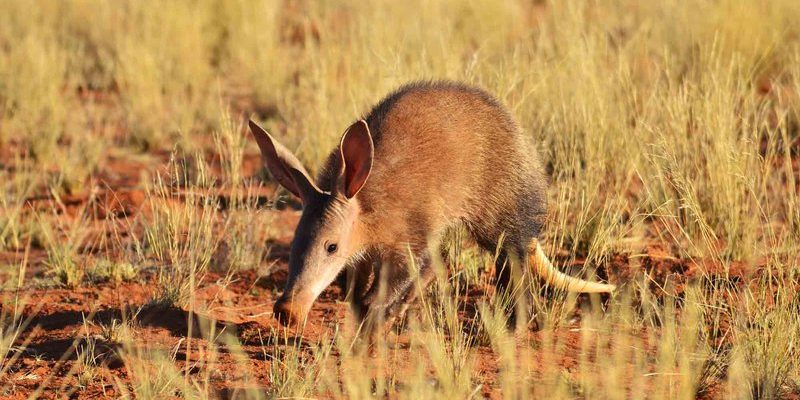
When you think of the African wilderness, you might picture lions, elephants, or zebras. But tucked away in the grasslands and savannas is this fascinating creature playing a vital role in the ecosystem. Aardvarks have adapted over the years to thrive on a diet of ants and termites, and their hunting strategies are as interesting as their appearance. So grab your favorite snack, and let’s explore how these intriguing animals find food and what they eat!
Aardvark Diet: What’s on the Menu?
Aardvarks are unique nocturnal feeders, which means they’re most active at night. What do they eat during those moonlit hours? Their diet primarily consists of ants and termites. Picture this: an aardvark quietly snuffling around the ground, using its excellent sense of smell to locate a hidden ant mound or termite nest.
Here’s the thing: aardvarks can eat up to 50,000 insects in a single night! Their long, sticky tongues, which can be up to 12 inches long, are perfect for slurping up these tiny critters. They can flick their tongues in and out quickly, making them efficient bug catchers.
But it’s not just about quantity. Aardvarks have specialized teeth that are perfect for crushing hard exoskeletons. Their teeth grow continuously, just like a rodent’s, adapting to a diet that’s all about munching on tough insects. A diet rich in protein helps them thrive even in the harshest environments.
Hunting Strategies: How Aardvarks Find Food
You might be wondering, how do aardvarks find their food in the vast wilderness? Their hunting strategy is as clever as it is unique. They rely heavily on their keen sense of smell, which is estimated to be about 40 times more sensitive than ours. Imagine walking into a bakery and smelling fresh bread; that’s what an aardvark does when it catches a whiff of an ant mound nearby.
Once they locate a food source, aardvarks use their powerful legs to dig. They can dig a hole to reach an underground nest in just a few minutes. That’s not just impressive; it’s essential! Many of their favorite food sources are deep within the ground, so their ability to excavate is what leads to their dinner.
Interestingly, aardvarks don’t just dig in one place. They’re known to visit multiple sites in a single night, constantly on the move to keep their belly full. This nomadic style of eating ensures they get enough food while also preventing any one spot from being depleted.
Adaptations: Physical Features for Hunting
Aardvarks are truly built for their lifestyle. Their long snouts are not just for show; they help them dig into the earth and probe for food. Each feature of their design plays a vital role in how they hunt and consume their favorite snacks.
Their powerful claws make digging swift and effective. Unlike some animals that may have a more general purpose, aardvark claws are designed specifically for breaking into hard ground or mounds. Combined with their robust front legs, they can create burrows and expose hidden insects in no time.
Another fascinating adaptation is their thick skin. It protects them while digging and offers a barrier against bites from angry ants or termites. Aardvarks are even known to roll in dust to keep their skin healthy, which is a bit like hitting the spa for them!
Behavioral Traits: Nighttime Foragers
Being nocturnal has its advantages. Aardvarks come alive at night when temperatures drop, helping them avoid the scorching heat of the day. This behavior not only makes for comfortable hunting conditions, but it also reduces the chances of encountering predators.
Interestingly, aardvarks have a solitary lifestyle. Unlike some animals that hunt in packs, they prefer to go it alone. This allows them to cover more ground in search of food without competing with others of their kind. However, that doesn’t mean they won’t occasionally share a group of burrows or hang around each other’s feeding grounds.
Their unique foraging habits also mean they can sometimes be seen on the move, learning and adapting to new areas as they search for food. This flexible behavior helps them utilize various habitats, from savannas to forests.
Role in the Ecosystem: More Than Just Ant Eaters
Aardvarks might seem like simple ant eaters, but they play a much bigger role in their ecosystem than you might think. By digging into the ground, they help aerate the soil. This improves water penetration and nutrient distribution for plants, promoting healthier vegetation in their habitat.
Moreover, aardvark burrows serve as homes for other animals. When aardvarks vacate a burrow, creatures like rabbits and reptiles may move in, making use of the cozy space. In this sense, aardvarks are important for promoting biodiversity in their environment.
Their feeding also helps control insect populations. By consuming thousands of ants and termites, aardvarks prevent these insects from becoming overly dominant. This balance is crucial in maintaining healthy ecosystems where various species can thrive.
Conservation: Protecting the Aardvark
You might be surprised to learn that aardvarks face some threats despite their robust adaptations. Habitat loss due to human activities, like agriculture and urban development, poses significant challenges. As their environment shrinks, so does their food supply.
Moreover, aardvarks are often hunted for their meat or believed to bring bad luck in some cultures. As a result, conservation efforts are crucial to ensure that these unique creatures continue to thrive in the wild.
Organizations are working to protect their habitats, providing safe zones and promoting awareness of their ecological importance. By valuing aardvarks in their ecosystems, we contribute to a healthier planet overall.
In summary, aardvarks are fascinating creatures with specialized diets and hunting strategies. Their roles in the ecosystem are vital, and understanding them gives us a greater appreciation for the complexity of wildlife. So, next time you think about the African wilderness, remember the aardvark and its important place in the circle of life.

